With more than two million works of art spanning thousands of years, the Metropolitan Museum of Art is one of the largest art museums in the world, and it should be on everyone’s New York to-do list.
Its Beginnings
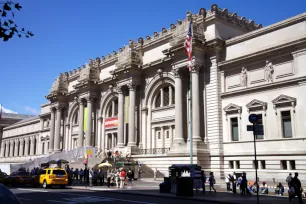
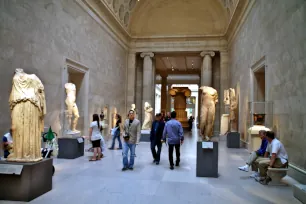
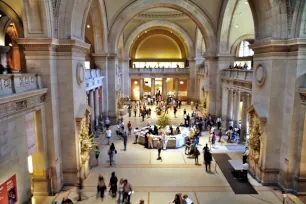
The origin of the museum can be traced back to Paris, where in 1866, the diplomat and prominent lawyer John Jay suggested to a group of American businessmen that there should be a national museum in America similar to those in Europe. Back at home they created a commission, led by William Cullen Bryant, that laid the foundations of the Metropolitan Museum of Art. The new museum opened in 1870 at a temporary location on Fifth Avenue. A collection owned by railroad tycoon John Taylor Johnston seeded the museum, which quickly outgrew its original premise.
Just a year after it opened, the museum found it necessary to move to the Douglas Mansion on 14th Street, but also outgrew that location within just a short period of time. Those responsible for the museum soon acquired a plot of land on the east side of Central Park, where the museum still stands today.
The Building
The original building at the Central Park location, which remains part of the complex, was designed by Calvert Vaux and Jacob Wrey Mould in the Gothic Revival Style. Vaux had designed Central Park along with his partner Frederick Law Olmsted.
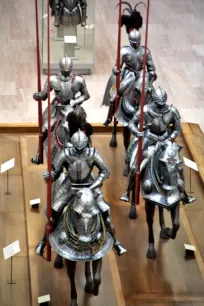
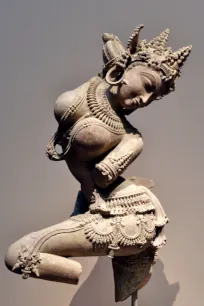
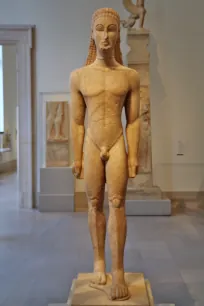
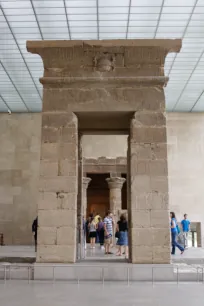
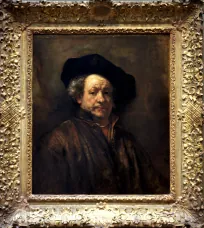
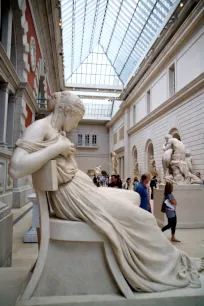
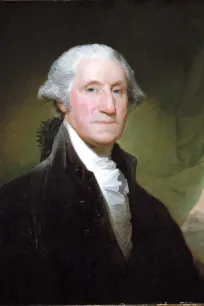
Many additions have been made since that time, including the most notable – the Beaux-Arts facade, which has made the museum recognizable the world over. The facade was designed by Richard Morris Hunt and added in 1926. Hunt also designed the museum’s grand entrance hall.
Today, the Met, as it is often called, measures about a quarter-mile long (400 meters) and occupies approximately two million square feet (almost 200,000 square meters). That means it has grown about twenty-fold since it first opened.
The Collection
Currently, the two million works of art at the Metropolitan Museum of Art are divided into 22 curatorial departments spread out over about 250 rooms. Below an overview of some of the most interesting galleries in the Metropolitan Museum.
Greek and Roman Antiquities
The collection of Greek and Roman art is one of the museum’s most popular. A Roman sarcophagus from the third century found in Asia minor – the very first item the Metropolitan Museum of Art obtained in 1870 – is still on display. Don’t miss the Boscoreale frescoes, taken from a villa that was buried under lava when the Vesuvius erupted in 79 AD. Another highlight is the Kouros from around 700 BC, the oldest Greek statue in the museum.
Egyptian Antiquities
More antiquities can be found in the Egyptian art galleries. The star attraction here is the temple of Dendur, built around 15 BC by the Roman emperor Augustus in honor of the Egyptian god Osiris. The temple was donated to the U.S. after the construction of the Aswan dam threatened to flood the area where the temple was located. In 1978, it was rebuilt here stone by stone. Another must-see is the reconstruction of the burial tomb of Perneb, from the twenty-fifth century BC.
European Art
A large part of the first floor is dedicated to European art, with galleries displaying European sculptures, medieval art, decorative arts as well as arms and armor.
The equestrian court, which shows horses and knights heavily clad in armor, is popular with visitors of all ages. In the adjoining rooms you can find magnificent weapons such as sabers inlaid with precious gemstones. The collection of statues includes works from the Renaissance period as well as masterpieces from famous artists such as Bernini. The decorative arts collection shows magnificent pieces of furniture, jewelry and tapestries. And even though much of the Metropolitan Museum’s collection of medieval art is on display in the Cloisters (a branch of the Met), there’s still plenty to see in the main museum, including Gothic tapestries, stained-glass, ivory objects and a chalice that was once thought to be the holy grail.
More European art can be found on the second floor of the museum, where you can admire European paintings as well as sculptures from the nineteenth and twentieth centuries. The collection of paintings includes masterworks from many of the major European artists such as El Greco, Raphael, Rubens, Van Eyck, Van Dyck, van der Weyden, Titian, Rembrandt and Vermeer, whose ‘Young Woman with a water pitcher’ is one of the museum’s top works.
American Art
The American Wing occupies three floors of the museum. One of the must-see items here is a collection of unique stained-glass created by Louis Comfort Tiffany. Another highlight is the portrait of George Washington created by Gilbert Stuart. You can also see plenty of furniture, glassware and even recreations of historical rooms.
Arts of Africa, Oceania and the Americas
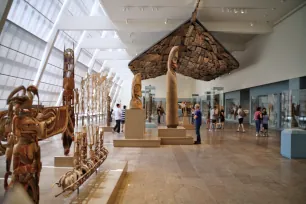
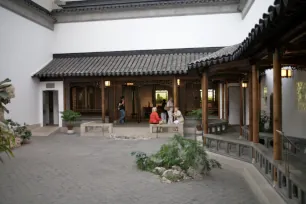
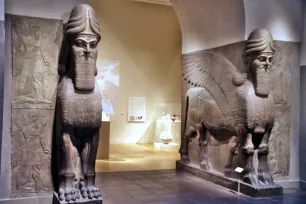
Indigenous art from non-European cultures is displayed in a wing on the first floor. Here you find a wide variety of artifacts, including beautiful wooden masks from the kingdom of Benin and stone sculpture from Mexico. A large hall is devoted to the islands of the Pacific Ocean, where you find intriguing items such as tall ancestor poles.
Asian Art
Asian Art can be found on the second floor, with dedicated galleries for Korean art, Chinese art and Japanese art. The collection contains objects from 2000 BC up to the twentieth century. One of the highlights is the Astor Court, a Chinese garden court in Ming style that was recreated here by craftsmen from Suzhou. There are also plenty of ceramic and jade artifacts on display, as well as paintings and large Buddha statues.
More
There are even more galleries at the Metropolitan Museum of Art, with displays of Ancient Near Eastern art, Cypriot art, costumes, musical instruments, drawings and prints, modern art and photographs.
The Met also features a rooftop sculpture garden and the amazing Robert Lehman Collection, often described as one of the most extensive and impressive private art collections in the world.

